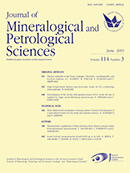
Journal of Mineralogical and Petrological Sciences
Scope & Guideline
Innovative Insights into Earth’s Composition
Introduction
Aims and Scopes
- Mineral Characterization:
The journal emphasizes detailed characterization of minerals, including their chemistry, crystal structure, and physical properties. This is often achieved through advanced techniques such as electron microscopy, X-ray diffraction, and spectroscopic methods. - Geochemical Analysis:
Research articles frequently explore the geochemical composition of rocks and minerals, utilizing methods like isotopic analysis and geochemical modeling to understand their formation and evolution in different geological environments. - Petrogenesis Studies:
The journal features studies on the genesis and evolution of rocks, with a focus on igneous, metamorphic, and sedimentary processes. These studies often include fieldwork, petrological analysis, and geochronological assessments. - Experimental Petrology:
A significant portion of the journal includes experimental studies that simulate geological conditions to understand mineral stability, phase transitions, and the behavior of materials under varying temperature and pressure conditions. - Environmental and Economic Geology:
The journal also addresses the implications of mineralogy and petrology in environmental contexts and resource exploration, highlighting the economic significance of mineral deposits and their sustainable management.
Trending and Emerging
- High-Pressure and High-Temperature Research:
There is a notable increase in studies focusing on high-pressure and high-temperature conditions, which are crucial for understanding the behavior of minerals in the Earth's mantle and during subduction processes. - Experimental Mineralogy:
Experimental approaches to mineralogy, including synthesis and characterization of minerals under controlled conditions, are becoming more prevalent. This trend emphasizes the importance of laboratory-based studies in complementing field observations. - Geochemical Cycling and Environmental Impact:
Research exploring the geochemical cycling of elements and minerals in relation to environmental issues is on the rise. This includes studies on the impact of mining, mineral weathering, and mineral interactions with fluids in various ecosystems. - Mineral Formation from Biological Processes:
Emerging interest in biomineralization and the role of biological processes in mineral formation indicates a growing interdisciplinary approach that merges geology with biology, enhancing our understanding of mineral evolution. - Advanced Spectroscopic Techniques:
The application of cutting-edge spectroscopic techniques, such as synchrotron radiation and advanced imaging methods, is trending, allowing for more detailed insights into mineral structures and compositions.
Declining or Waning
- Traditional Sedimentology:
Research related to traditional sedimentological processes has seen a decline, possibly as the field shifts towards more integrated approaches that incorporate sedimentology with other geological disciplines such as geochemistry and mineralogy. - Mineral Deposits and Ore Geology:
Papers specifically focused on classic mineral deposit studies and ore geology have become less frequent, potentially due to a broader interest in environmental impacts and sustainability, which may overshadow traditional economic geology. - Petrology of Common Igneous Rocks:
Studies centered around well-known igneous rocks are less common, as there appears to be a growing interest in more exotic or complex systems, including high-pressure and high-temperature environments that challenge existing paradigms.
Similar Journals

GEOCHEMICAL JOURNAL
Unveiling the Complexities of Earth's ProcessesGEOCHEMICAL JOURNAL, published by the Geochemical Society of Japan, stands as a pivotal platform for researchers and professionals dedicated to the fields of geochemistry and petrology, as well as geophysics. With the ISSN 0016-7002 and E-ISSN 1880-5973, this journal has been disseminating cutting-edge research since its inception in 1966 and continues to provide invaluable insights into the complexities of Earth's processes. Currently categorized in the Q3 quartile for both Geochemistry and Petrology and Geophysics, the journal ranks in the 40th and 36th percentiles, respectively, as per Scopus metrics, reflecting its growing influence and relevance in the scientific community. The journal accepts a range of scholarly articles, aiming to foster a deeper understanding of geochemical phenomena while promoting interdisciplinary collaboration among academicians and practitioners. Although not open access, the GEOCHEMICAL JOURNAL's commitment to quality research and education underscores its vital role in advancing the discourse within geoscience.
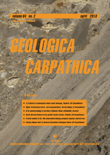
GEOLOGICA CARPATHICA
Bridging the Gap Between Theory and Practice in GeologyGEOLOGICA CARPATHICA, with ISSN 1335-0552 and E-ISSN 1336-8052, is a distinguished open access journal published by the Slovak Academy of Sciences Geological Institute, serving as a pivotal platform for the dissemination of research in the field of Geology. Established in 1991 and continuing through 2024, the journal is recognized for its significant contributions to Earth and Planetary Sciences, evidenced by its 2023 Scopus ranking placing it in the second quartile (Q2) within Geology. With an H-index that showcases its impactful publications, GEOLOGICA CARPATHICA is committed to fostering scholarly communication while promoting accessible research, having adopted an open access model since 2009. Located in beautiful Bratislava, Slovakia, this journal aims to engage a global audience of researchers, professionals, and students interested in ecological, geological, and environmental studies, making it a prominent resource for enriching the scientific community's understanding of the Carpathian region and beyond.
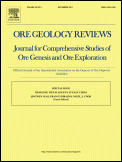
ORE GEOLOGY REVIEWS
Pioneering Research in Geochemistry and PetrologyORE GEOLOGY REVIEWS is a premier academic journal published by Elsevier, renowned for its influential contributions to the fields of Economic Geology, Geochemistry, and Petrology, and Geology. With its esteemed Q1 ranking across these disciplines in 2023, it occupies a leading position in shaping scholarly discussions and advancements within the geological sciences. With an impressive Scopus ranking—47th in Earth and Planetary Sciences for Geology, and among the top 40 in Geochemistry and Petrology—this journal serves as an essential resource for researchers, professionals, and students committed to advancing knowledge in ore geology. Having transitioned to an Open Access model in 2022, ORE GEOLOGY REVIEWS enhances the accessibility of high-quality research, promoting wider dissemination and engagement with cutting-edge findings from 1986 to 2024. As a valued publication addressing the intricacies of ore deposits and geochemical processes, it aims to foster interdisciplinary collaboration and innovation in the field.

Periodico di Mineralogia
Connecting Scholars in the World of MineralogyPeriodico di Mineralogia, published by SAPIENZA UNIV EDITRICE, is a distinguished academic journal based in Italy that has been pivotal in advancing the fields of Geochemistry, Geology, and Geophysics since its inception in 1979. With an ISSN of 0369-8963 and an E-ISSN of 2239-1002, the journal boasts a solid reputation reflected in its Q3 category rankings across these disciplines as per 2023 metrics. The journal’s scope encompasses a broad range of topics related to mineralogy and earth sciences, providing a vital platform for researchers, professionals, and students to disseminate their findings. Despite the absence of an Open Access option, Periodico di Mineralogia remains an essential resource for the dissemination of high-quality research that contributes to our understanding of earth processes and materials. Situated in the heart of Rome at PIAZZALE ALDO MORO 5, it serves as a crucial bridge between academic research and practical applications in geology and planetary sciences.

Canadian Journal of Mineralogy and Petrology
Championing Earth Sciences: Where Knowledge Meets AccessibilityThe Canadian Journal of Mineralogy and Petrology, published by the Mineralogical Association of Canada, is a pioneering platform dedicated to the dissemination of high-quality research in the realms of mineralogy, petrology, and geochemistry. With an increasing focus on global geological challenges, the journal serves as a crucial resource for researchers, professionals, and students alike, offering peer-reviewed articles that reflect the latest advancements in these fields. Although specific metrics such as the impact factor and H-Index are not currently available, the journal is committed to fostering valuable discourse and innovation, thereby enhancing our understanding of Earth's materials. The journal operates under an Open Access model, ensuring that its findings are widely accessible, thus promoting collaborative research and education. Situated in Quebec, Canada, the journal plays a vital role in connecting the international research community with local expertise and discoveries, making it an essential read for anyone involved in mineralogical sciences.
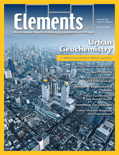
Elements
Elevating the Dialogue in Earth SciencesElements is a premier academic journal published by the Mineralogical Society of America, dedicated to advancing knowledge in the fields of Earth and Planetary Sciences and Geochemistry and Petrology. Since its inception in 1973, this journal has established itself as a leading source of impactful research, evidenced by its prestigious Q1 rankings in both categories in 2023, placing it among the top journals globally with Scopus ranks of #18 and #23, respectively. Elements is uniquely positioned to foster interdisciplinary dialogue, offering a platform for groundbreaking studies that explore the fundamental processes shaping our planet. Although it operates without an open access model, its rigorous peer review process guarantees the integrity and quality of published work, making it an essential resource for researchers, professionals, and students eager to stay abreast of the latest developments in mineralogy and earth sciences. With a commitment to excellence, Elements continues to push the boundaries of our understanding of geological phenomena and their implications for both science and society.

ACTA PETROLOGICA SINICA
Advancing the Science of Earth's MaterialsACTA PETROLOGICA SINICA, published by SCIENCE PRESS, is a distinguished journal in the field of geochemistry and petrology, known for its commitment to advancing the understanding of Earth's materials and processes. With an impact factor ranking it in the second quartile (Q2) of its category and a respectable Scopus rank of 64 out of 154, this journal serves as a vital platform for researchers, professionals, and students alike, facilitating the dissemination of innovative studies and findings from 1980 to the present. Its robust editorial board and diverse array of articles make it an invaluable resource for those engaged in the intricate analysis of petrological phenomena and geochemical transformations. Published in China, ACTA PETROLOGICA SINICA provides access to significant original research, reviews, and insights essential for advancing knowledge and fostering collaboration in the earth sciences.

MINERALOGICAL MAGAZINE
Advancing Mineral Science Through Rigorous ResearchMINERALOGICAL MAGAZINE, published by Cambridge University Press, is a distinguished journal dedicated to advancing the field of mineralogy and its related disciplines, including geochemistry and petrology. With its ISSN 0026-461X and E-ISSN 1471-8022, this quarterly journal has successfully carved a niche since its inception, contributing critical research and insights from 1969, with ongoing publications up to 2024. Holding a commendable Q2 ranking in the field, it currently occupies the 61st position among 154 journals in its category, reflecting its robust influence as measured by Scopus rankings at the 60th percentile. Scholars and researchers seeking to publish impactful findings in earth sciences will find MINERALOGICAL MAGAZINE an essential platform that not only supports rigorous research but also fosters global discourse within the mineralogical community. Its accessibility ensures that valuable insights reach a wide audience, solidifying its position as a beacon for professionals and students alike in understanding the complexities of mineral compositions and their broader implications on earth science.
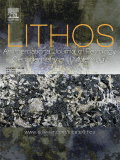
LITHOS
Transforming Understanding of Earth's Processes.LITHOS is a prestigious academic journal published by Elsevier, renowned for its contributions to the fields of Geochemistry and Petrology. As an integral platform since 1968, this journal focuses on advancing the understanding of the Earth's composition and processes, adhering to the highest academic standards as evidenced by its Q1 ranking in both Geochemistry and Petrology, and Geology. With an impressive impact factor and substantial visibility in scientific databases, LITHOS caters to a broad audience, including researchers and students eager to engage with cutting-edge studies. Although it is not an open-access journal, its scholarly rigor and relevance have established it as a leading resource for the latest findings and methodologies in Earth sciences. Notably, it ranks #41 in Earth and Planetary Sciences: Geology and #34 in Geochemistry and Petrology, demonstrating its significant influence within the academic community. The journal is based in the Netherlands and continuously opens avenues for innovative research through its commitment to excellence in the geosciences.

Journal of Geosciences
Advancing Earth Sciences through Innovative ResearchJournal of Geosciences is a distinguished peer-reviewed journal published by CESKA GEOLOGICKA SPOLECNOST, based in the Czech Republic, that serves as a vital platform for the dissemination of innovative research in the field of Earth and Planetary Sciences. With an ISSN of 1802-6222 and E-ISSN of 1803-1943, this journal has established its significance within the academic community, evidenced by its Q3 ranking in both Earth and Planetary Sciences and Geology. The journal covers a broad array of topics, making it an essential resource for researchers, professionals, and students interested in geoscientific advancements and discoveries. The Journal of Geosciences reflects a commitment to high-quality scholarship, embracing a variety of methodologies and interdisciplinary approaches, and provides open access to its content, thereby encouraging global collaboration and knowledge sharing among geoscientists. With a publication history converging from 2007 to 2024, it continues to be a prominent venue for critical conversations and developments in the ever-evolving field of geosciences.